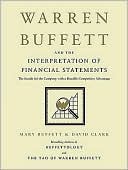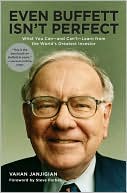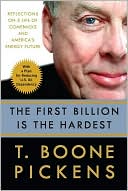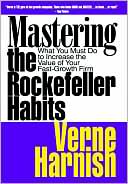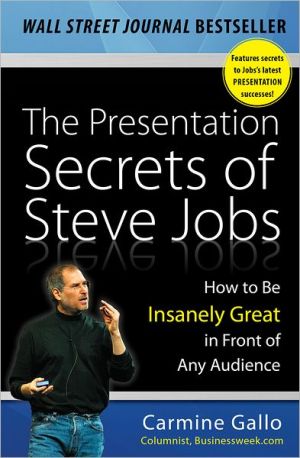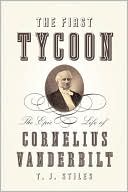Warren Buffett and the Interpretation of Financial Statements: The Search for the Company with a Durable Competitive Advantage
Search in google:
Mary Buffett and David Clark clearly outline Warren Buffett's strategies in a way that will appeal to newcomers and seasoned Buffettologists alike. Inspired by the seminal work of Buffett's mentor, Benjamin Graham (The Interpretation of Financial Statements, 1937), this book presents Buffett's interpretation of financial statements with anecdotes and quotes from the master investor himself.Potential investors will discover:---Buffett's time-tested dos and don'ts for interpreting an income statement and balance sheet---Why high research and development costs can kill a great business---How much debt Buffett thinks a company can carry before it becomes too dangerous to touch---The financial ratios and calculations that Buffett uses to identify the company with a durable competitive advantage---which he believes makes for the winning long-term investment---How Buffett uses financial statements to value a company---What kinds of companies Warren stays...
Introduction Chapter 1: Two Great Revelations That Made Warren the Richest Person in the World Chapter 2: The Kind of Business That Will Make Warren Superrich Chapter 3: Where Warren Starts His Search for the Exceptional Company Chapter 4: Durability Is Warren's Ticket to Riches Chapter 5: Financial Statement Overview: Where the Gold Is Hidden Chapter 6: Where Warren Goes to Find Financial Information THE INCOME STATEMENT Chapter 7: Where Warren Starts: The Income Statement Chapter 8: Revenue: Where the Money Comes In Chapter 9: Cost of Goods Sold: For Warren the Lower the Better Chapter 10: Gross Profit/Gross Profit Margin: Key Numbers for Warren in His Search for Long-Term Gold Chapter 11: Operating Expenses: Where Warren Keeps a Careful Eye Chapter 12: Selling, General, and Administrative Expenses Chapter 13: Research and Development: Why Warren Stays Away from It Chapter 14: Depreciation: A Cost Warren Can't Ignore Chapter 15: Interest Expense: What Warren Doesn't Want Chapter 16: Gain (or Loss) on Sale of Assets and Other Chapter 17: Income Before Tax: The Number That Warren Uses Chapter 18: Income Taxes Paid: How Warren Knows Who Is Telling the Truth Chapter 19: Net Earnings: What Warren Is Looking For Chapter 20: Per-Share Earnings: How Warren Tells the Winners from the Losers BALANCE SHEET Chapter 21: Balance Sheet in General Chapter 22: Assets Chapter 23: Current Asset Cycle: How the Money Is Made Chapter 24: Cash and Cash Equivalents: Warren's Pile of Loot Chapter 25: Inventory: What the Company Needs to Buy and What the Company Needs to Sell Chapter 26: Net Receivables: Money Owed to the Company Chapter 27: Prepaid Expenses/Other Current Assets Chapter 28: Total Current Assets and the Current Ratio Chapter 29: Property, Plant, and Equipment: For Warren Not Having Them Can Be a Good Thing Chapter 30: Goodwill Chapter 31: Intangible Assets: Measuring the Unmeasurable Chapter 32: Long-Term Investments: One of the Secrets to Warren's Success Chapter 33: Other Long-Term Assets Chapter 34: Total Assets and the Return on Total Assets Chapter 35: Current Liabilities Chapter 36: Accounts Payable, Accrued Expenses, and Other Current Liabilities Chapter 37: Short-Term Debt: How It Can Kill a Financial Institution Chapter 38: Long-Term Debt Coming Due and the Troubles It Can Cause Chapter 39: Total Current Liabilities and the Current Ratio Chapter 40: Long-Term Debt: Something That Great Companies Don't Have a Lot Of Chapter 41: Deferred Income Tax, Minority Interest, and Other Liabilities Chapter 42: Total Liabilities and the Debt to Shareholders' Equity Ratio Chapter 43: Shareholders' Equity/Book Value Chapter 44: Preferred and Common Stock: Additional Paid in Capital Chapter 45: Retained Earnings: Warren's Secret for Getting Superrich Chapter 46: Treasury Stock: Warren Likes to See This on the Balance Sheet Chapter 47: Return on Shareholders' Equity: Part One Chapter 48: Return on Shareholders' Equity: Part Two Chapter 49: The Problem with Leverage and the Tricks It Can Play on You THE CASH FLOW STATEMENT Chapter 50: The Cash Flow Statement: Where Warren Goes to Find the Cash Chapter 51: Capital Expenditures: Not Having Them Is One of the Secrets to Getting Rich Chapter 52: Stock Buybacks: Warren's Tax-Free Way to Increase Shareholder Wealth VALUING THE COMPANY WITH A DURABLE COMPETITIVE ADVANTAGE Chapter 53: Warren's Revolutionary Idea of the Equity Bond and How It Has Made Him Superrich Chapter 54: The Ever-Increasing Yield Created by the Durable Competitive Advantage Chapter 55: More Ways to Value a Company with a Durable Competitive Advantage Chapter 56: How Warren Determines the Right Time to Buy a Fantastic Business Chapter 57: How Warren Determines It Is Time to Sell Appendix Select Glossary of Terms Acknowledgments Index
